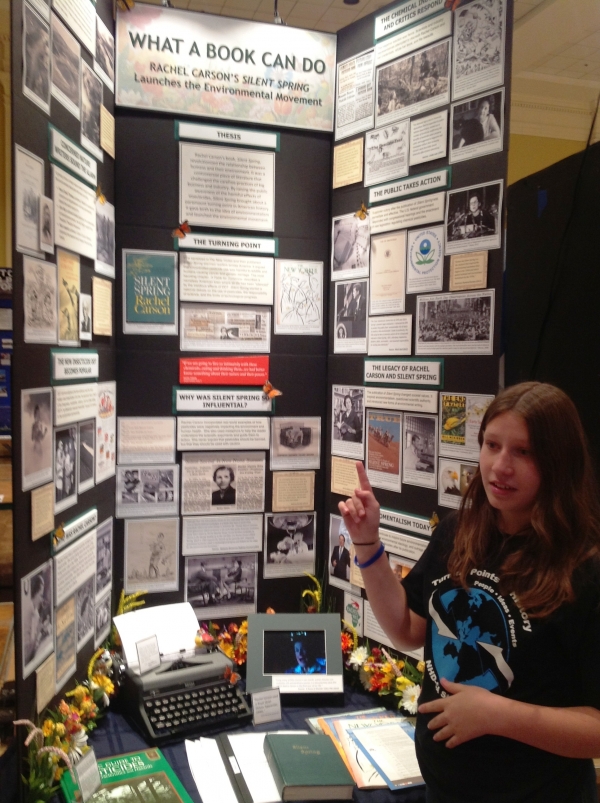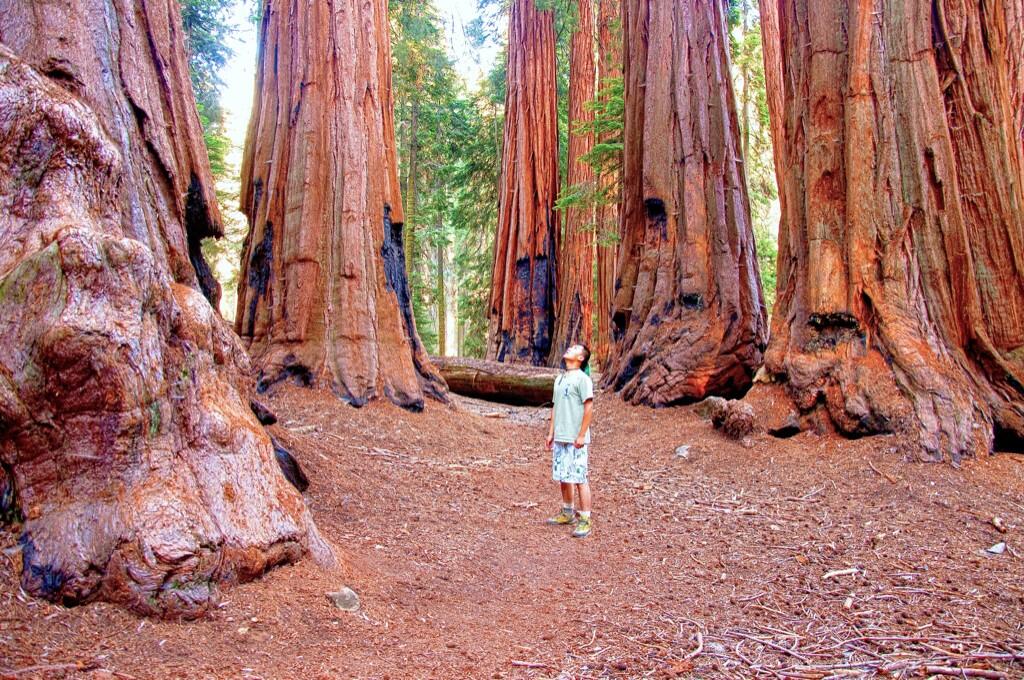News from the San Ramon (California) Express [links added here, except for reporter’s contact]:

Julienne Sauer in front of her project, “What a book can do — Rachel Carson‘s Silent Spring Launches the Environmental Movement.” (© 2013 San Ramon Express)
San Ramon student takes first at National History Day contest
Windemere Ranch Middle School student was one of 30 recognized by the National Endowment for the Humanities (NEH) for their impressive use of historic newspapers in projects presented at National History Day.
Julienne Sauer, who graduated from eighth grade last week, took first place in NEH’s individual exhibit junior division for her project titled “What a book can do — Rachel Carson’s Silent Spring Launches the Environmental Movement.” This year’s National History Day theme was “Turning Points in History: People, Ideas, Events.”
Julienne was also named a National Endowment Humanities Scholar.
The annual event is the culmination of a year-long academic program in which students in middle and high school conduct original historical research for papers, exhibits, websites, documentaries and public performances. Each year more than 600,000 students compete in local, regional and state competitions for a chance to win a spot at the national finals.
This year was the first time NEH awarded prizes to students who incorporated into their projects research using Chronicling America, a free online database of 5 million pages of historic US newspapers dating from 1836 to 1922, digitized through a partnership between NEH and the Library of Congress.
Julienne won a national finalist award at the 2011 National History Day exhibit for her exhibit titled “The Cable Car Wars: A City Debates to Preserve its Character.”
Carson’s work was good enough that, even 49 years after her death, 51 years after the publication of Silent Spring, Carson and the book still inspire students to heights of excellence in study.
More:
- National History Day contest: Where history is hip (mcclatchydc.com)
- Stoller Middle School girl heading to National History Day competition (oregonlive.com)
- National History Day Pocket Page (gotmoxxie.typepad.com)
- Why it’s important to have accurate history and science on the internet: Don’t lie to kids about DDT (timpanogos.wordpress.com)
- Hooked on history . . . National History Day, that is (Your history, your wall)
- [National History Day] (U.S. Capitol Historical Society)
- Ohio’s National History Day (History in the Field)
- Story Time: National History Day (Reckless Hubris)
- Herblock: Dissent, Democracy and the Average American (The History Rat)
- Fort Johnson Middle Goes to Washington (The Mind of Morrison)
- The Chicago and Dakota Railroad: : A Turning Point for Aebleskiver, Kringle, and Kransekake (Moland Freak)
- National History Day (AnnThe)
- Breaking News!! (Real Girl; No Name)
- National History Day (Mason in the Middle)
- Quick Hit: More students, more national honors (Children First)



 Posted by Ed Darrell
Posted by Ed Darrell 









